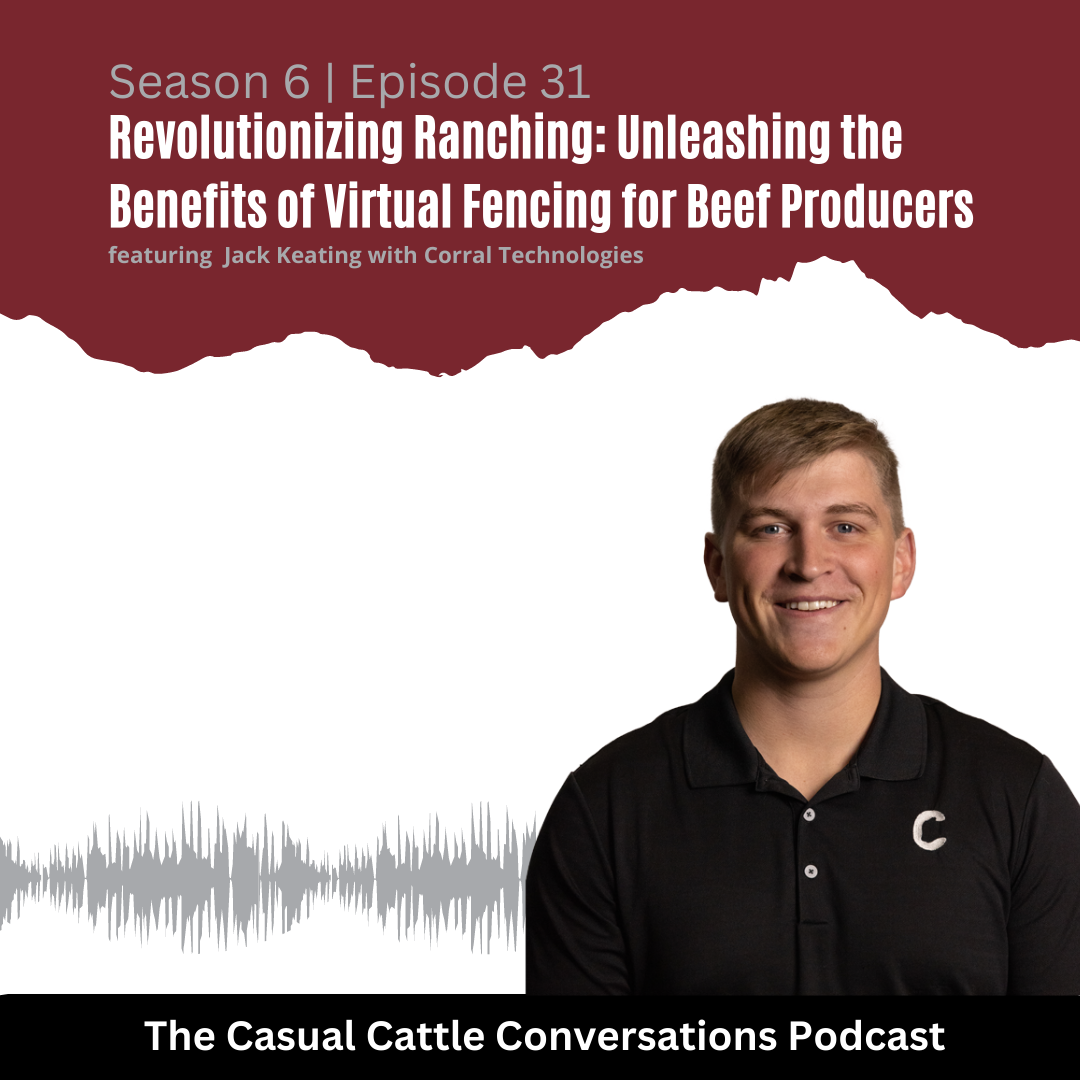Revolutionizing Ranching: Unleashing the Benefits of Virtual Fencing for Beef Producers

Question of the Week: Where do you want to put your time?
This week’s episode discusses virtual fencing and how one of the benefits is saving time. Keating shares that you can use this same time to do other ranch work, work more hours at your other job or not have to pay an employee for these hours. I am curious about which one you’d pick. I’d even add in some free time too as an option.
Jack Keating grew up ranching with his family in Nebraska and noticed a need for an easier way to build cross-fences. He knew about invisible fences for dogs and wanted to do the same thing for ranches but eliminate the need for burying wires with this concept. This problem led Jack to start Corral Technologies, a virtual fencing company that changes the way cattle producers manage their rotational grazing strategies. Jack shares what the process of implementing virtual fencing looks like as well as the return-on-investment cattle producers can expect to see in this podcast episode.
How does Virtual Fencing for Cattle Work?
Implementing virtual fencing with Corral Technologies is as simple as booking a call with Jack to see if the system is right for you and working with his team to get collars ordered and the software set up. From there, cattle producers will understand how to put the collars on the cows, create fence boundaries and get the most out of the program. There are no additional towers that need to be installed, as Corral’s program runs off cellular data that is uploaded every 15 minutes. If using cellular data is not an option in a specific area, satellite transmission is the next option.
Training the cows is also a part of the implementation process. It can take between 5-14 days to train the cows. You allow the cows to access ¾ of a pasture which creates one virtual boundary for them to interact with. As they approach the boundary, they are warned by a sound, followed by a louder sound and eventually, they get shocked.
“It’s strange seeing cows turn 180 degrees all from hearing a beep for the first time, but they do learn to respect it,” said Keating.
Calves do not wear collars along with the cows, so maintaining your perimeter fence is still important as you will be relying on natural herding to keep them close.
The program also offers additional data outside of just being able to draw fence boundaries. Cattle producers can see where their cows are located, a heat map of where they have been grazing the most and if an individual cow’s activity has been lower or higher than normal. This is just the tip of the iceberg for what the future has in store too!
Who will Benefit from Virtual Fencing?
Currently, the producers seeing the most benefit from virtual fencing are those who have 200 cows or less, are already using rotational grazing and have a second job in town. Virtual fencing allows them to save time “cross-fencing” and move their groups more frequently.
“The biggest impact I see this technology making is allowing cattle producers to do any rotational grazing practice with relative ease and flexibility. You can adjust your cross-fences at any time without having to go dig fence posts or string wire,” said Keating.
Currently, Corral charges $250 upfront per collar and $50/year for a use fee. This brings your total to $300/collar for the first year and only $50/year after that. This includes the software and warranty to replace damaged collars too. If you are wondering where the ROI comes into play, you can look at it a couple of different ways.
“The first thing to look at is how rotational grazing allows you to increase your carrying capacity, after that think about how much time the system saves you to either do other work on the ranch or work longer at your off-farm job. This also reduces how many hours you might be paying someone else to fix and build cross-fence for you,” said Keating.
Keating and his team ran a cost analysis that compares virtual fencing to traditional fencing. They took a 3200-acre ranch with no boundaries and split it into 10 pastures. After calculating installation costs, they also looked at labor and maintenance costs for the 20-year life span of these fences. The total came out to approximately $4 million dollars. The cost of installing and maintaining the perimeter fence and implementing virtual fencing comes out to approximately $1.5 million dollars over the same 20-year period.
At the end of the day, virtual fencing is a technology that is going to drive increased profits for cattle producers. It has the potential to improve grazing strategies that impact soil health and maximize the value of grazing lands with ease. Attend one of Corral Technologies’ upcoming field days to learn how this technology works in a hands-on setting. More information is on their website.








